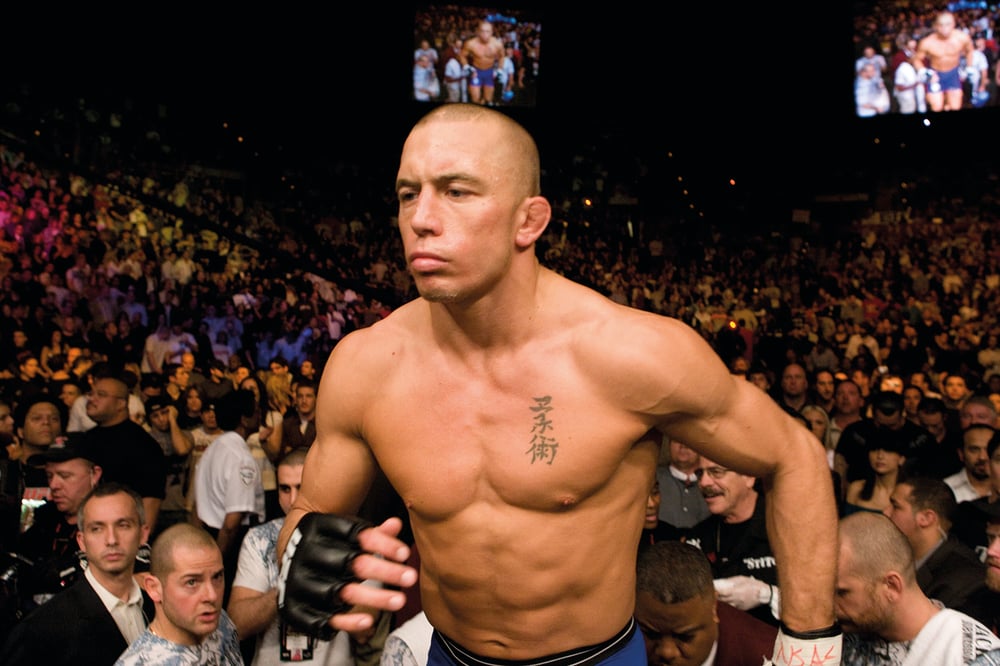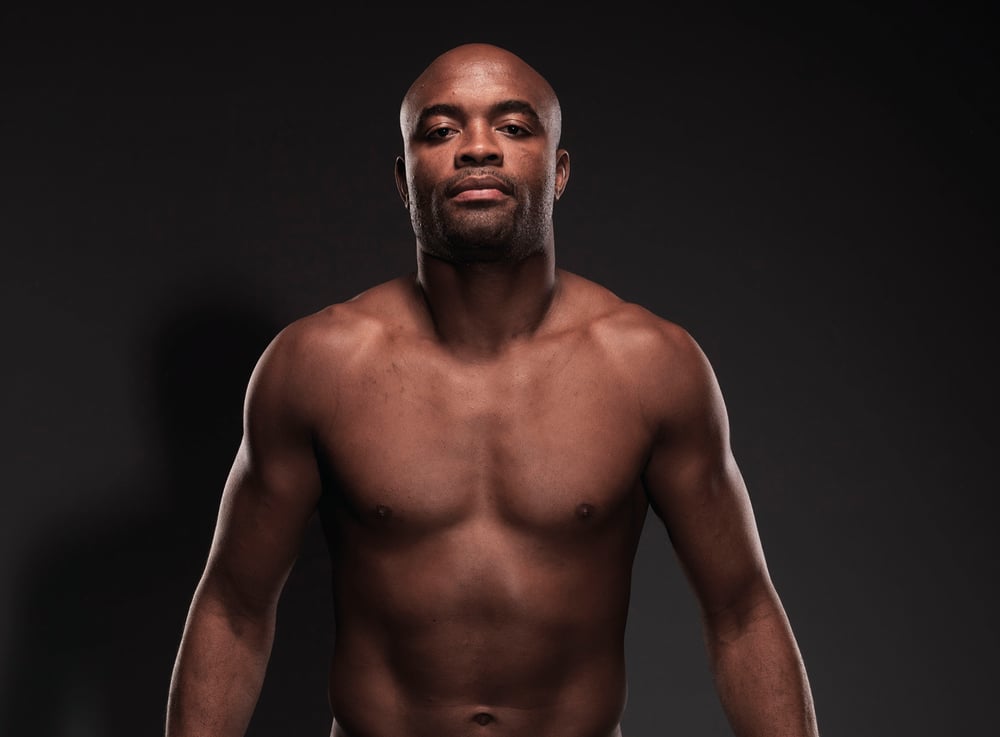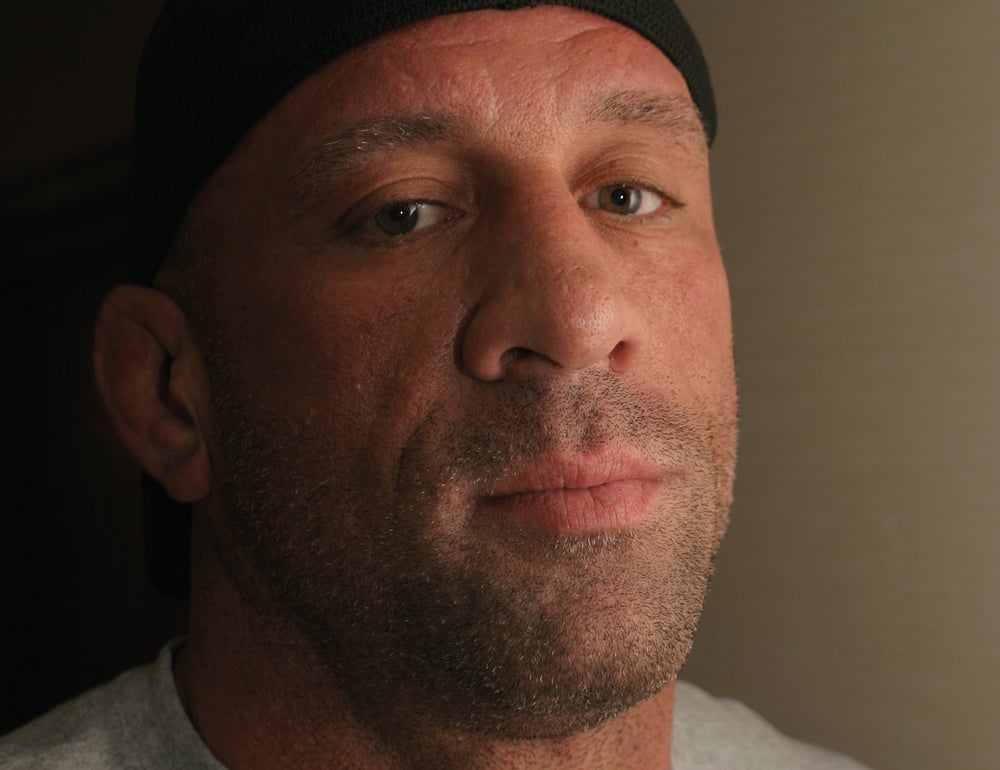
Issue 059
February 2010
Throughout history there are examples of people who have single-handedly changed the way we think about their particular sport. Whether it has been through athletic innovation or sheer force of personality, they have had a profound impact.
For instance, look at boxing: Jack Dempsey’s slugging and movie-star lifestyle excited the public’s imagination; Henry Armstrong introduced the concept of being a champion at multiple weights; Ali danced and rhymed pugilism onto the front pages; Oscar De La Hoya showed it was possible for fighters to actually run the show.
Despite being a relative new kid on the block, MMA has developed rapidly. The sophisticated action we see in the cage today is barely recognizable as the same sport when compared to the primitive battles from the early modern era. Changes have been driven by a number of factors, but some of them are the direct result of the exploits of a select few individuals, fighters who have made a clear and lasting impression on the sport of MMA.
In no particular order, we profile ten men we feel shaped the
sport forever.
Royce Gracie
If you look up the word influential in a dictionary, you might see a picture of a skinny 27-year-old Brazilian in a gi. Royce Gracie’s exploits in the early UFCs changed our perceptions of fighting forever. Armies rewrote their unarmed combat guides and all serious martial artists re-evaluated their systems.
Royce Gracie demonstrated that, in a one-on-one confrontation, a grappler has the advantage over a striker. This was year zero, a massive culture shock for an audience brought up on boxing and barroom brawling. For the first time a global audience were exposed to the ultra-effective techniques perfected by Helio Gracie. Brazilian jiu-jitsu delivered what every other martial art had promised. Skill and tactics could beat brute force. Royce choked and armbarred a succession of monsters into submission to ram home the point. BJJ (AKA Gracie jiu-jitsu) conquered the world. Gyms sprang up everywhere as the desire to emulate Royce spread. Jiu-jitsu became an essential weapon in every fighter’s arsenal.
Royce was followed into the sport by a succession of Gracies, including Renzo and the legendary Rickson. Once opponents wised up and worked on their sub defense, jiu-jitsu was no longer an irresistible force, but it remains a potent tool. Minotauro Nogueira’s considerable achievements were built on his strong BJJ base. Recently, Demian Maia has proved that a pure jiu-jitsu artist can still be competitive in the upper echelons of the UFC.

Frank Shamrock
Frank Shamrock is widely considered to be the original prototype of a modern mixed-martial-arts fighter. His coming-out party was his whirlwind submission victory over the undefeated Kevin Jackson to take the first UFC middleweight title at Ultimate Japan in December 1997.
Shamrock was the first genuine all-rounder. His kickboxing prowess and background in submission wrestling meant he was equally comfortable standing up or on the canvas. For the first time, fans saw a fighter who could flow seamlessly between the disciplines. Style versus style became redundant. It became obvious that cross-training was essential for the next generation. Anderson Silva and Georges St Pierre are the most obvious examples of fighters who followed Frank’s lead, but everyone who now enters a cage is, to some extent, a son or daughter of Shamrock.
Shamrock also blazed a trail in terms of preparation, embracing cardiovascular training, weights and plyometrics. He demonstrated his physical fitness when he outlasted the highly-touted Tito Ortiz at UFC 22. The message was clear; the era of Tank Abbott beer bellies was over. To compete successfully at the highest level, you had to become an athlete. Frank Shamrock set the standard and played a significant role in transforming MMA from a made-for-TV spectacle into a genuine sport.

Kazushi Sakuraba
Some people rank Kazushi Sakuraba as one of the greatest fighters of them all. More importantly he was the right man in the right place at the right time.
When the Pride organization was taking its baby steps, the Japanese public held out little hope of a major home success. The general view was that the local wrestlers would struggle against the much-hyped foreign fighters. That all changed when Sakuraba took on the best of the best. His four legendary fights against the Gracie family saw Sakuraba beat Royler, Royce, Renzo and Ryan. Each came to represent the first family of fighting in the Land of the Rising Sun, and Sakuraba dealt with them all.
Without Sakuraba, Pride would not have flourished as it did. The promotion had a home-grown superstar to market. Sakuraba appealed to a wider audience. Brought up in the crazy world of pro-wrestling, he understood how to put on a show. His flamboyant personality and love of masks combined with his employer’s extravagant production values provided the blueprint for the East Asian MMA-spectaculars we know and love.
Sakuraba is a Japanese icon, but his ace grappling-technique was made in England. His mentor was Bill Robinson, champion catch-wrestler and graduate of the Snake Pit gym in Wigan.
Mark Coleman
Mark Coleman wasn’t the first wrestler to succeed in MMA. Others, notably the multiple UFC-champ Dan Severn, had shown that wrestling provided a suitable foundation for a fighter. Coleman took things a stage further. He came up with a strategy that was as simple as it was revolutionary: take down your opponent and beat the hell out of him. Ground ‘n pound was born.
‘The Hammer’ refined this rough plan into a thing of beauty. He would utilize the skills and balance developed on the wrestling mat to control his grounded opponent. All the time, he would be looking for the opening. When the time was right, Coleman would adjust his posture and deliver heavy, accurate punches and elbows. This was a quantum leap from the scattergun attacks that went before. The threat of being caught in a submission by a jiu-jitsu stylist had made punching on the deck a risky option. Mark Coleman’s clinical approach changed that.
Today, the idea of MMA without ground ‘n pound seems ridiculous and the need to control your man and posture up is seen as second nature. Coleman went on to take the UFC heavyweight belt. Recent titlists Randy Couture and Brock Lesnar owe much of their success to the style pioneered by The Hammer.

Chuck Liddell
Chuck was the man who turned the tide. The conventional wisdom stated that a pure striker could not succeed in mixed martial arts. ‘The Ice Man’ dragged the conventional wisdom outside and beat it to a pulp.
Liddell insisted that his adversaries must stand up with him. Any who didn’t want to had to find an answer to his sprawl and brawl tactics. Chuck operated from a solid, wide stance. He also had quick reflexes, good balance and plenty of wrestling experience. Time after time, Chuck stood tall and his foes fell.
Chuck Liddell wasn’t the only fighter to employ sprawl and brawl, but his impact on the sport was incomparable. His knack for dropping bodies was a major factor in the rise of the UFC. A Chuck fight was as close to a guaranteed KO as you could get, which meant instant gratification for the masses. No scene in the wide world of sports comes close to the majestic tragedy of a fearsome contender being reduced to ornamental rug status by a straight right hand.
Liddell delivered when it mattered. The boom in participation in MMA coincided with his reign as UFC champ. This gave us the mouthwatering prospect of a whole new wave of fighters coming through who were inspired to don the gloves because they wanted to bang like Chuck.
Only one of Chuck Liddell’s 21 career wins came by way of submission. Between April 2004 and December 2006, Chuck had seven UFC fights in Las Vegas. He won them all by KO or TKO.

Randy Couture
Randy Couture is the perfect MMA role-model, and not because of his achievements in the cage – not even because of his longevity, although that is quite astonishing. Entering the Octagon for the first time over the age of 30 is impressive. Competing at an elite level at the age of 46 is incredible. Couture has ripped up the rule book when it comes to retirement age.
The thing that really sets Randy apart is his attitude. As an ambassador for the sport, he has no peers. ‘Captain America’ never gets involved in trash talk and shows the utmost respect to his opponents. He always has time for fans and this open-access policy has been embraced by other top fighters and promotions. The star fighters are approachable and available for photographs, autographs and a quick word. This is an almost unique situation in major sports. Randy is now reaping the rewards as the face of the Xtreme Couture gym and clothing brand, and with parts in a number of high-profile movies. Nice guys don’t always finish last.

Genki Sudo
Genki Sudo took over from Kazushi Sakuraba as Japanese MMA’s greatest showman. His entrances are the stuff of legend, betraying his enthusiasm for Kabuki [traditional Japanese theater], Broadway musicals, 50s sci-fi and an excessive use of compressed air.
Behind the madness was a bizarre philosophy, a heady mix of spirituality and MTV. A practicing Buddhist, Sudo believed we are all one. He meant no disrespect to opponents. Wearing a KFC bucket on his head or leading a group of cheerleaders to the ring was part of greater whole of which the fight was a small part. When battle commenced, the goal was more than victory. Genki Sudo valued beauty as well as efficiency. Why throw a conventional strike when you can throw a spinning back-fist or a flying triangle? Fellow artist Cung Le fights with the same aesthetic concerns.
Genki Sudo’s influence is apparent. Asian fighters like Akihiro Gono pay homage to him with their entrances. Other tributes have been less well judged. Promotions like Cage Rage and EliteXC copied the idea of creating an event by bringing troupes of choreographed dancers, explosions and glitter into the arena. The result was a tacky mess.
Genki Sudo was outweighed by 250lb when he fought former boxer Butterbean. Sudo literally ran rings around the super heavyweight before submitting him with a heel hook.

Tito Ortiz
The anti-Randy. Like ‘The Natural’, Tito also has the clothing brand, is one of the most popular fighters in the sport and has been involved in some of the biggest grossing fights in UFC history. Unlike Randy, the image he presents to the public is far from clean cut.
Tito Ortiz is a case study in how far you can get in life with a sharp tongue and a big mouth. Everything about him demanded a reaction, from the obscene T-shirts mocking his opponents to his over-the-top gravedigger celebration. You either loved him or you hated him. ‘The Huntington Beach Bad Boy’ also became a master of the age-old marketing ruse known as ‘the feud’.
Tito had long-running beefs with both Chuck Liddell and Ken Shamrock. The three clashes between Tito and the ‘not that dangerous anymore’ Shamrock were box-office gold for the UFC thanks to the animosity between the pair whenever a camera was switched on. To create a pro-wrestling style storyline the pair were cast as coaches on season three of The Ultimate Fighter in the run-up to their second clash. This proved so successful the formula has been repeated on subsequent seasons with Pulver and Penn, Hughes and Serra and Rampage and Rashad cast as the deadly rivals.
Tito T-Shirt Slogans:
Yuki Kondo: “RESPECT: I don’t earn it, I just fuckin take it!”
Ken Shamrock: “I Just Killed Kenny, You Bastard”
Elvis Sinosic: “That’s American For Whoop Ass Mate”

Georges St Pierre
GSP personifies the zeitgeist in MMA. He combines the affability of Couture, the professionalism of Frank Shamrock and the tactical nous of Coleman. St Pierre was a formidable, well-rounded prospect when he entered the UFC. In the time he has been there his progress has been remarkable.
In other individual sports it is common for an elite athlete to totally overhaul his game to improve his performance. After each of the two defeats, GSP has analyzed his shortcomings and came back a changed man. The current model, constructed after the Matt Serra setback, appears invincible. Working with master game-planner Greg Jackson and the best coaches and sparring that money and goodwill can buy, he has stripped away the frills and reinvented himself as the most imposing wrestler in the biz.
This is not a return to style against style. It is a case of working with experts to turbo-charge your strengths then formulating tactics that force your opponent to play to them: real fight science.
In 2008 Georges St Pierre was named the Canadian Athlete of the Year by Rogers Sportsnet, the Canadian cable-TV channel.

Anderson Silva
The most complete champion in UFC history, Anderson Silva has it all. He has demonstrated mastery in all areas of the game: kneeing the souls out of stand-up tough guys on the way to the belt, slapping a triangle on a jiu-jitsu black belt and knocking out a celebrated brawler with a jab while on the back foot. Forget different class, the guy looks like a different species as he dominates mere mortals. Why hold guard when you can apply a body triangle? His exquisite flowing movement makes above-average strikers look pedestrian.
Silva’s dominant position is good news. Not satisfied with merely winning, he takes the opportunity to experiment on the job. In his last non-UFC fight Silva successfully trialed a whacky reverse-elbow on Tony Frykland’s skull with lethal results. The snooze-fest against Thales Leites saw the champ amuse himself by punching the challenger’s legs. Anderson Silva already influences the MMA world by embodying excellence. He is the man all must strive to emulate, the man most likely to do something extraordinary, the favorite to make the next big breakthrough.
Anderson Silva is a former McDonald’s employee. The supreme fighter still enjoys a Big Mac now and again – he is human after all.











